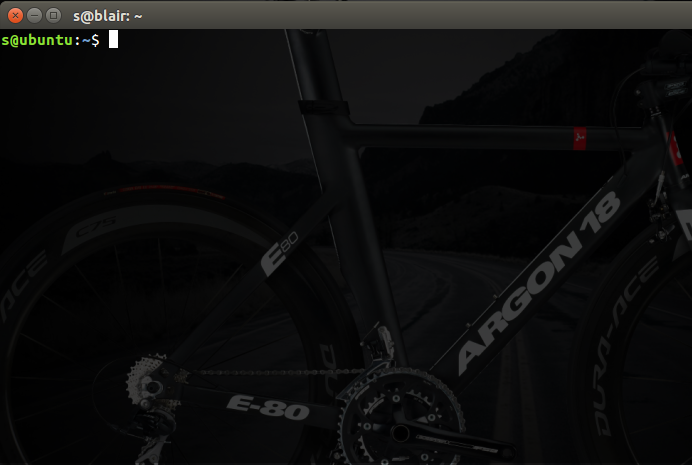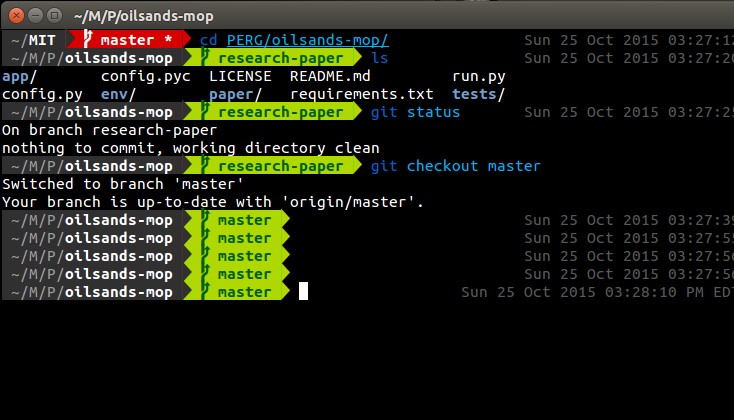In the spirit of improving our development sandbox, we set out to look for a better gnome terminal experience. We started out with this boring bash shell terminal:

The end result looks as follows:

This new shell provides you with a more flamboyant experience by integrating Tmuxinator with Oh-My-Fish
Tmuxinator
Fist step install Tmuxinator
gem install tmuxinator
Then, depending on your default editor, you will have to specify
export EDITOR='vim'
Create new project with
tmuxinator new [project]
where [project] is the given name to your Tmuxinator project.
Start a session with
mux [project]
Look at the sample ~/.tmuxinator/project.yml file to give you an idea of what you can do in different ‘windows’. In our case, we are creating 3 windows, one for personal development, one for work, and one for the localhost server. You can get creative. For example, you could auto start 3 windows and launch Vagrant. Since my default shell is still bash, we specify in the panes option to start the fish shell.
Fish & Oh-My-Fish
To install Oh-My-Fish, you need to install Fish shell v2.1.0 or above. First, let’s install Fish. Fish stands for Friendly Interactive Shell. Go to fishshell.com and select your OS. For us, it is Ubuntu, so we downloaded the .tar.gz file, then
tar -xzf fish_2.2.0.orig.tar.gz
cd fish-2.2.0
Apply the Autotools Build
autoconf
./configure
make
sudo make install
If everything worked, you should be able to start your fish shell on your terminal with $ fish command, you will see that the shell looks different. To go back to bash, simply type ~> bash. Fish has very interesting features such as autocompletion. That is time saved and you reduce then number of keystrokes.
Next we want to install the Oh-My-Fish framework for managing the Fish configuration
curl -L https://github.com/oh-my-fish/oh-my-fish/raw/master/bin/install | fish
To play with the style and colouring, you need to install a theme. You can browse themes here. In our case, we went ahead with the theme bobthefish
omf install bobthefish
This theme is powerful for Git as they use the Powerline to show lots of relevant information to you once you are working in a Git repository.
The final step is to install Powerline and a font. This part is very tricky and we would recommend to read the official documentation on how to do it:
http://powerline.readthedocs.org/en/master/installation/linux.html http://powerline.readthedocs.org/en/master/usage/shell-prompts.html#fish-prompt
More documentation available at:
https://github.com/tmuxinator/tmuxinator https://github.com/oh-my-fish/oh-my-fish